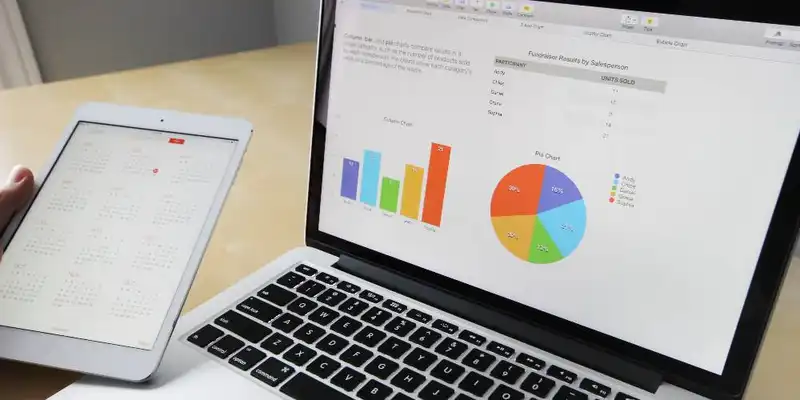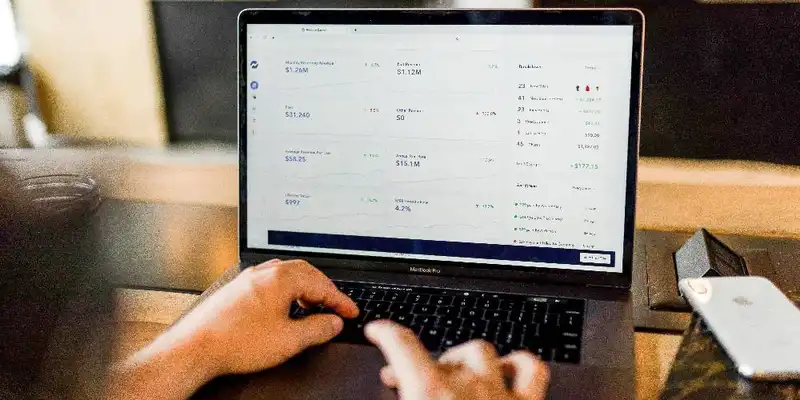What Is the Procurement Process? Definition, Tips, and More
Introduction to the Procurement Process
The procurement cycle is the series of actions required to obtain goods or services from an outside source. The events may include researching vendors, order requests, budget negotiation, purchases, and audits.
The procurement cycle can require significant time and capital to complete. For example, if a retailer needs to restock a product, they must first complete internal procedures like purchasing order requests and invoicing approvals.
Once all of the requests are approved, management handles inventory costs and warehousing fees with external vendors and storage facilities. Only when all of these processes are complete can the business finally purchase their inventory.
Understanding the importance of procurement management and properly implementing its steps can help businesses optimize their profits.
The Importance of the Procurement Process

Company procurement requires a supplement from the total revenue to acquire necessary goods and services. In 2019 alone, businesses wasted roughly 30% of expenditures on unimpactful purchase orders because of inadequate internal procurement systems. Therefore, the efficiency of the procurement cycle directly impacts the business's cost savings and bottom line.
The 2018 Pulse of Procurement survey by Zyncus, disclosed that 54% of procurement businesses set cost savings as their main focus. This means over half of the organizations recognize the unnecessary expenses involved in outdated procurement methods and prioritize fulfillment efficiency. Aside from limiting expenses, the process flow can enhance the supplier relationship, compliance, and risk management.
Companies should periodically assess their supplier's performance to ensure order fulfillment is up to their standards. This evaluation process can identify strengths and weaknesses within the supply chain that allows management to apply changes where needed. Periodic procurement analysis also builds a symbiotic relationship between the vendor and the company. Open communication about the processes enables both sides to benefit from agreed cost terms and the quality of goods.
Implementing a comprehensive system can help manage risks associated with the supply chain. Additionally, preventing risks pertaining to finances, contracts, production, and operations can promote operational efficiency and profitability.
Effective cycles also help businesses determine what vendor would best meet their needs according to their production standards. By choosing a vendor based on procurement needs, companies can provide high-quality goods and services at a minimum cost.
By applying an effective procurement strategy and running periodic quality checks, businesses can optimize all stages of the supply chain and their cost savings.
Difference Between Purchasing and the Procurement Process

While both processes are performed to attain the necessary goods and services for a company, the focuses of procuring versus purchasing are very different.
Purchasing goods is a reactive process that focuses on the capital needed to arrange the expenditure. This practice looks solely at the quantitative data, such as the price tag, to make decisions. Therefore, the purchase procedure is only employed when it is time to place an order. All costs are evaluated, such as ordering, shipping, and other payment forms to ensure the company is limiting its expenses.
On the other hand, the business procurement cycle is a proactive process that centers around fulfilling the company's needs and building relationships. Procuring involves all of the steps required to order goods, from initial paperwork to contacting vendors. This system is more concerned about an item's value rather than just the price tag. Therefore, when the company orders goods, they are able to make connections with suppliers that will benefit them in the long run.
The 3 P's of Procurement
From order requisition to the final purchase, the procurement method uses elements called the 3 P's to ensure efficient execution. These three components include-
1. People
Many people can be involved in the procurement process. Therefore, it is vital for management to assign a person for every step. Decision-makers such as human resources, financial advisor, legal department, and operations manager should also be involved in determining the risk factors.
For example, ordering new computers would require less approval and assistance than renovating a business's building.
2. Process
The process of ordering goods should include checkpoints at each step for quality assurance. Stages, including reviewing products, ordering, delivery, and payment, must be performed accurately and punctually. Any errors in the process can result in delayed vendor payments, affecting the supplier-distributer relationship.
3. Paperwork
Although many companies use procurement software to streamline their processes, paperwork refers to all process documentation. Businesses need to complete adequate reports and paperwork at each stage for auditing purposes.
Steps of the Procurement Process

Typically, the procurement process includes seven generic steps that can be altered to fit any business model. The steps include-
1. Identify the Company's Needs
The cycle starts when a company recognizes a need for a good or service. Identifying the need as either internal, materials required to run operations, or external, items intended to sell, is the first step. Once the need is pinpointed, the financial department needs to set a budget in order to move on to the next stage.
2. Evaluate Vendors
Finding a supplier should rely on their ability to meet the company's value and quality of goods standards. The criteria should include the manufacturer's production quantity, reputation, timeliness, dependability, and customer service. Vendors must also offer a competitive price that lowers the business's purchase cost. Sourcing adequate vendors is essential because it can potentially lead to a long-term relationship that mutually benefits both parties.
3. Negotiate Price and Submit a Purchase Requisition
Once the business settles on a vendor, both parties must agree on the price of goods. This step, known as contracting, requires collaboration on terms and conditions involving production and delivery. Only once every factor is outlined in the contract, can the business send a purchase requisition to their internal finance department. The financial advisor must go through their necessary procedure and approve the request before an order can be finalized.

4. Release Purchase Order
The purchase order is created when the company is finally able to buy the goods or services from the approved vendor. The order is a contract that legally binds both the business and vendor to the terms they agreed on. For auditing and tracking purposes, purchase orders are either recorded manually or created using ordering software.
5. Receive Invoice and Place the Final Order
When the supplier receives and reviews the company's purchase order, they return an invoice. The invoice will describe the products, quantities, and prices, as well as note when the final payment is due. If the business has any discrepancies with the order, they have limited time to contact the vendor and make changes. After that set period is up, the order is finalized, and production begins.
6. Pay for Goods and Conduct an Audit
Depending on when the agreed payment time was set, the company will pay for the goods before or after the delivery. Once the goods arrive at the business's facility, the financial department's accounts payable team must go over the invoice and conduct an audit. The group performs a three-way matching audit, an accounts payable process that matches the data from the purchase orders, invoices, and delivery instructions.
7. Update Records
The final step of the procurement process is updating all records to include information from the audit, invoice, and purchase order. Accurate bookkeeping is essential as it makes quarterly inspections less complicated and avoids stock discrepancies.
Tips to Optimizing Profits via the Procurement Process

It is important to note that the procurement cycle employees are also responsible for other projects. Therefore, the process must be straightforward, efficient, and as painless as possible to avoid any confusion or discrepancies.
There are several ways a business can increase the efficiency and accuracy of their procurement process, including-
1. Double-Check Everything Before Making a Purchase
The procurement system is meant to help businesses save capital by reducing inventory-related costs. However, placing an order for every request does not support this mission. Managers should go over each request and talk with the submitter regarding any questions. Having open communication about inventory usage and rotation can prevent losing capital from overstocking.
When the requests have been checked, consolidated, and ready to be ordered, management should go over the vendor's contract. There should not be any gaps regarding vague terms and conditions, but rather a comprehensive outlined plan that satisfies both parties. Ensuring all sections of the contract are clear will provide a smooth flow throughout the supply chain.
2. Focus on Building Relationships With Vendors
The research conducted and time invested in finding a vendor that fits the company's needs should aim to build a long-lasting, beneficial relationship. Forming a partnership streamlines the procurement process by minimizing the time required to look for future suppliers. It can also save the business capital, often because vendor-distributer relationships come with specific discounts to maintain supplier exclusivity.
3. Expand Your Network
While it may seem easier to control the process within one team, expanding the group with departments throughout the business can give better insight. After all, departments, like finance, are involved once the order is placed and when an audit needs to be conducted. Creating an open dialogue with all internal and external groups will speed up the procurement process and build trust.
4. Use Analytics to Help Make Decisions
Supply chain management should have full analytics at every stage of the procurement cycle. Insights at each step allow management to make necessary changes to streamline the process and save capital.
5. Remember to Negotiate Terms
Most things in life are negotiable, especially business endeavors. Saving costs and building partnerships requires confident negotiation skills on both sides to create a healthy balance.
How Automated Systems Streamline the Procurement Process

The procurement strategy can present many challenges. However, utilizing an automated ordering system helps prevent issues in the cycle. Some elements that digital software offers to streamline the process include-
- Efficiency - Digital systems are quicker, more accurate, and regulate processes according to the organization's quality standards. Utilizing automated software requires fewer people needed at each stage, saving the business on labor and inventory costs.
- Analytics - Automated systems can be set up to generate detailed order reports that analyze all costs. This data helps management optimize inventory levels and save on unnecessary expenses.
- Reduced Human Error - Requiring less human control, automated software limits manual input, preventing human error within inventory data. With accurate information, management can ensure satisfaction in all stages of the procurement cycle.
- Reduced Risk - Generated reports from automated systems increase transparency between internal and external operations, preventing any confusion. With everyone on the same page, there is a reduced risk for any discrepancies within the supply chain.
- Strategy - By integrating an ordering system with a company's established goals, businesses can align their priorities with quantitative data to increase their scalability.
Procurement Activity Benefits of Replenishment Software

Many procurement management systems offer the same basic features that help make the procurement cycle more efficient. However, companies should strive for software that provides additional elements that ensure optimization.
When researching, businesses should look for systems that offer-
- Spending Control and Analysis
- Convenient Purchase Order Approval
- Easy Integration With Other Software
- Risk Management
- Automated Detailed Reports
- Customization
- Templates
- Interactive Applications With In-Real-Time Stock Orders and Levels
Software tools also alert users of any changes in supplier rates so the business can determine if they need to find another vendor. These elements ensure that companies offer their consumers the best possible price, increasing satisfaction and sales.
The procurement cycle is a meticulous process that requires extensive time, money, and labor. However, while it is necessary for fulfilling a company's needs, it can be streamlined by implementing a comprehensive plan and automated software. Integrating all of these moving parts can help businesses build partnerships, increase their cost savings, and drive their profits.






